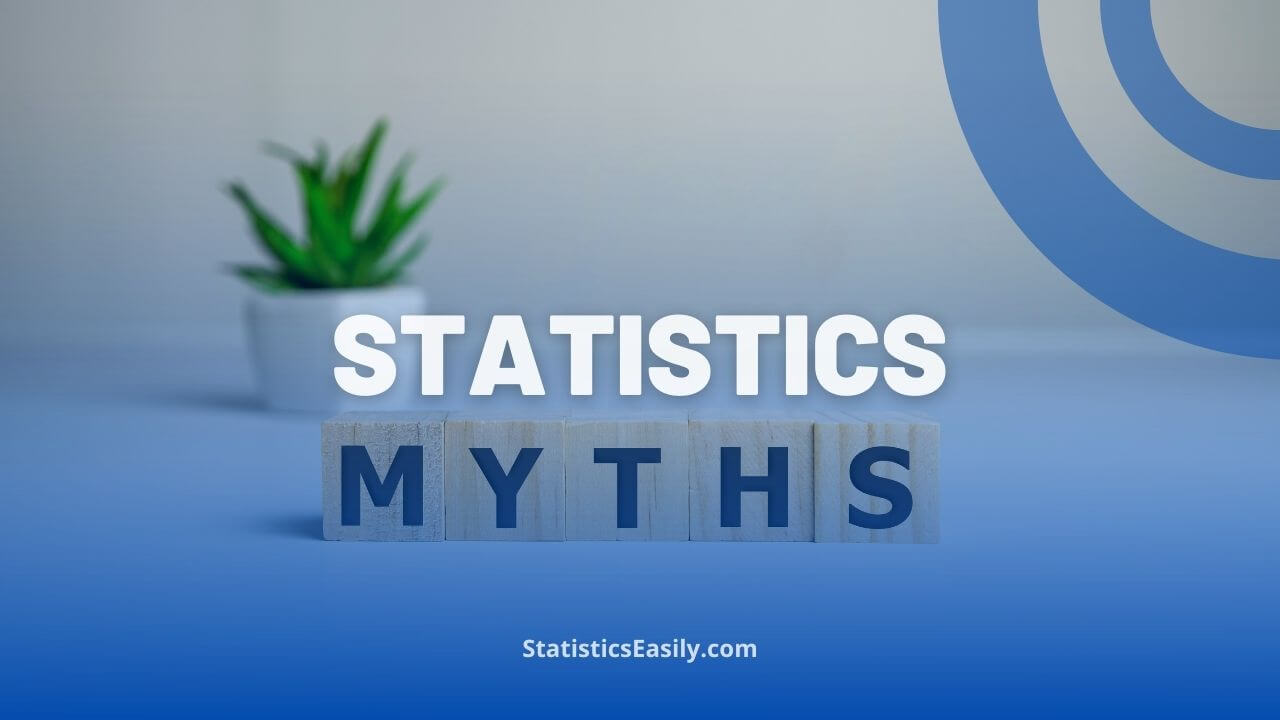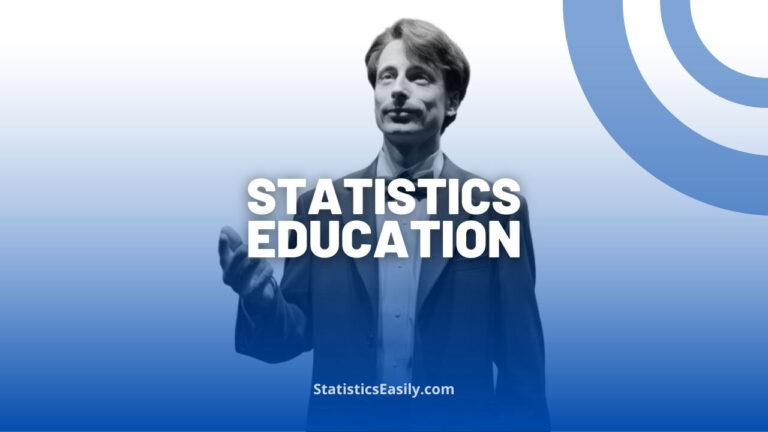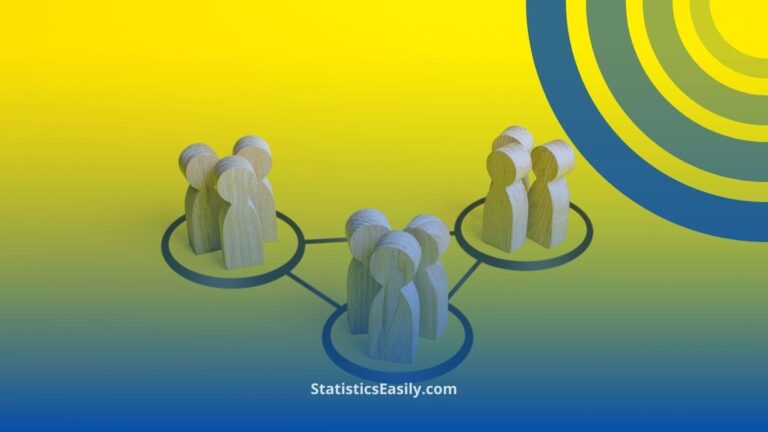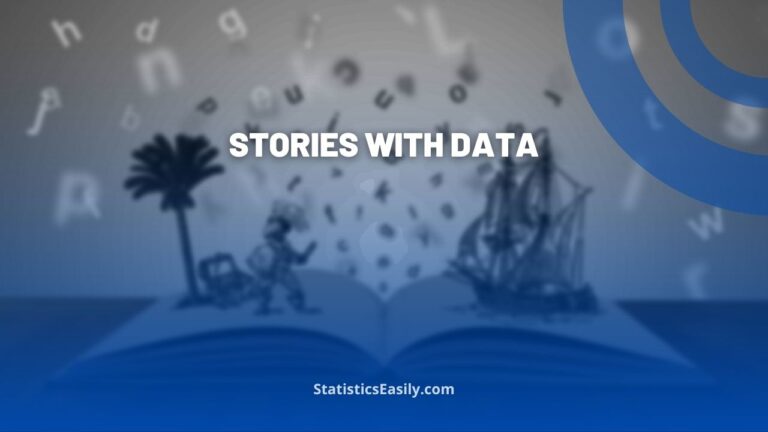7 Myths About Statistics You Need to Stop Believing
In this article, we dispel 7 myths about statistics, addressing issues like correlation vs. causation, p-value misconceptions, and the role of sample size. Our discussion is backed by empirical evidence and adheres to scholarly guidelines for clarity and truthfulness.
Introduction to 7 Myths About Statistics
Statistics serves as the backbone of a multitude of industries — spanning healthcare, economics, psychology, and even politics. The value of statistics lies in its ability to provide empirical evidence to support or debunk claims. Despite its importance, Statistics remains shrouded in misconceptions and myths that often lead to its misapplication or misuse. This article debunks seven prevalent myths about statistics, illuminating its true nature, capabilities, and limitations.
Understanding the essence of statistics is paramount, not just for professionals in the field but for the public as well. As we evolve into a data-driven society, the ability to interpret and question statistical information becomes increasingly critical. By dispelling common myths, we pave the way for a more enlightened and responsible use of statistics.
This article challenges these myths by presenting facts supported by theory and practice. By doing so, we aim to promote the responsible use of statistics, fostering a more accurate understanding and enabling better decision-making processes across various fields.
Highlights
- Correlation ≠ causation.
- Low p-value isn’t ultimate proof.
- More data ≠ better insights.
- Stats can be manipulated.
- Stats aren’t just for mathematicians.
- Sample size matters.
- Not all stats are universally applicable.
Ad Title
Ad description. Lorem ipsum dolor sit amet, consectetur adipiscing elit.
Myth 1: Correlation Implies Causation
One of the most enduring statistical myths, perhaps the most dangerous, is the belief that correlation implies causation. While it might be tempting to conclude that a relationship between two variables suggests that one is causing the other, this simplistic interpretation is far from accurate.
The Difference Between Correlation and Causation
Correlation measures the strength and direction of a relationship between two variables. However, this does not inherently mean that one variable is the cause and the other is the effect. Several lurking variables — those not included in the study — could also affect both.
Why This Myth is Problematic
Confusing correlation and causation can lead to incorrect conclusions and misinformed decisions. For instance, in healthcare, assuming a causal relationship where only correlation exists can lead to ineffective treatments or wrong public health strategies.
Best Practices
It’s prudent to use correlation as a starting point, a preliminary tool to identify possible relationships worth investigating further. Researchers should employ more robust methods, such as randomized controlled trials, to infer causation reliably.
Myth 2: P-Value is the “End-All, Be-All”
The myth surrounding p-values suggests that they are the ultimate metric for determining the significance of an experiment’s results. While a low p-value does indicate that your observed data is unlikely under the null hypothesis, this is far from the whole story.
The Limits of P-Value
A low p-value is not a definitive measure of the effect size, nor does it account for the practical significance of the findings. A low p-value indicates that the data you’ve observed is less likely to have occurred by random chance, according to a specific statistical model.
The Risks of Overreliance
Relying solely on the p-value can lead to ‘p-hacking,’ a practice where researchers manipulate their experiments or data to arrive at a low p-value. This undermines the integrity of the results and makes them non-reproducible.
A More Holistic Approach
P-values should be one part of a comprehensive statistical toolkit that also includes other measures like confidence intervals, effect sizes, and domain-specific expertise. Only by considering these multiple aspects can one reach a robust conclusion.
Myth 3: More Data is Always Better
The maxim “more is better” seems to permeate our collective understanding, and statistics is no exception. Many believe the more data we collect, the better our analyses will be. While more data can provide a fuller picture, it has its pitfalls.
The Drawbacks of Excessive Data
More data can sometimes introduce noise rather than signal. Accumulating unnecessary or irrelevant data can obscure real trends and make analysis more complex. Moreover, more data often requires more computational power and time for analysis.
Quality Over Quantity
A well-curated, smaller dataset that has been meticulously collected can often yield better insights than a massive, haphazard collection of data. It is more important to have data that is relevant, clean, and well-sampled.
The Importance of Data Strategy
Before embarking on data collection, it’s crucial to have a clear data strategy. Know what you need, why, and how you intend to use it. Thoughtful planning can save both time and resources, ensuring that the data you collect is both necessary and sufficient for your purpose.
Ad Title
Ad description. Lorem ipsum dolor sit amet, consectetur adipiscing elit.
Myth 4: Statistics Can Prove Anything
The saying, “You can prove anything with statistics,” is a pervasive myth that has led to distrust in statistical analysis. This misconception often originates from instances where statistics have been misused or manipulated.
The Pitfalls of Misinterpretation
Statistics can be easily manipulated by selecting biased samples or using questionable data analysis methods, often resulting in misleading conclusions. For example, manipulated statistics are frequently found in false advertising claims and biased research.
Ethical Considerations
Statistical methods are meant to provide an impartial, accurate representation of data. Manipulating these methods to serve an agenda is more than scientifically unsound; it’s unethical. Researchers and statisticians have a moral obligation to present data objectively.
Mitigating the Risks
To counteract this myth, it’s crucial to scrutinize the methodology of any statistical claim rigorously. Peer reviews, replication studies, and transparency in data sourcing can all contribute to the credibility of statistical analyses.
Myth 5: Normal Distribution Applies to Everything
The normal distribution is a foundational concept in statistics and is the basis for many statistical tests. However, the idea that it applies universally is a harmful myth.
The Limitations of Normal Distribution
Not all data sets follow a normal distribution. Real-world phenomena such as income, population growth, and even the spread of diseases often follow different types of distributions like exponential or power-law distributions.
The Risk of Wrong Assumptions
Applying normal distribution to a data set that doesn’t fit this model can lead to significant errors in analysis, potentially affecting policies and decisions based on that data.
Choosing the Right Model
Different types of data call for different distributions. For example, stock market returns often follow a distribution with “fat tails,” known as leptokurtic distribution. It’s crucial to understand the characteristics of your data set to choose the appropriate analysis model.
Myth 6: Complex Models are Always Better
The allure of complexity often leads people to think that a more complex statistical model will yield more accurate results. However, this is rarely the case.
The Curse of Overfitting
Complex models are prone to a problem known as overfitting, where they perform exceptionally well on the data they were trained on but poorly on any new data. This leads to models that are not generalizable and, therefore, less useful in practice.
The Virtue of Simplicity
In contrast, simpler models often provide a balance between fit and generalizability. Occam’s razor, which states that more straightforward explanations are generally better, applies aptly to statistics.
Finding the Middle Ground
The best approach is to strike a balance, opting for a model complex enough to capture the nuances of the data but simple enough to be applicable in different scenarios. Techniques like cross-validation can help in finding this balance.
Myth 7: Statistics is Only for Mathematicians
Statistics is often viewed as an arcane field reserved for mathematicians or those with an extensive background in math. This perception could not be further from the truth.
The Interdisciplinary Nature of Statistics
Statistics is a versatile tool applicable across many disciplines, including social sciences, healthcare, business, and more. A rudimentary understanding of statistics can benefit anyone, regardless of their field.
Democratization of Statistical Learning
Thanks to the plethora of online resources and user-friendly software, Statistics has become more accessible than ever. Today, you don’t have to be a math prodigy to understand or use basic statistical methods effectively.
Encouraging Statistical Literacy
Promoting a basic understanding of statistics among the general populace can lead to more informed decisions in both personal and public spheres. As we move toward an increasingly data-driven world, statistical literacy is not just beneficial; it’s essential.
Ad Title
Ad description. Lorem ipsum dolor sit amet, consectetur adipiscing elit.
Conclusion on 7 Myths About Statistics
Statistics is a potent and indispensable tool across various domains. However, its effectiveness is severely limited by the myths and misunderstandings surrounding it. By dispelling these myths, we can foster a more responsible and effective use of statistics, thereby contributing to a better understanding of the complex world.
It’s crucial to approach statistical information with a discerning eye. Do not take claims at face value; instead, delve into the methodology and context surrounding the data. The more we promote the accurate understanding and application of statistics, the better equipped we will be to navigate the challenges of our data-centric world.
Recommended Articles
Interested in learning more about statistical analysis and its vital role in scientific research? Explore our blog for more insights and discussions on relevant topics.
- Music, Tea, and P-Values: Impossible Results and P-Hacking
- What They Never Told You About Statistics Education
- How Statistical Fallacies Influenced the Mozart Effect
- P-hacking: A Hidden Threat to Reliable Data Analysis
- Florence Nightingale: How Data Visualization Saved Lives
Frequently Asked Questions (FAQs)
Q1: Why is understanding statistics vital in today’s world? Statistics is essential because it provides the framework for making informed decisions in various fields such as healthcare, economics, psychology, and politics. As society becomes more data-driven, the skill to interpret and critically evaluate statistical information is crucial for professionals and the general public.
Q2: What is the difference between correlation and causation? Correlation measures the strength and direction of a relationship between two variables but doesn’t imply that one causes the other. Causation implies a direct cause-and-effect relationship between two variables. Confusing the two can lead to incorrect conclusions and misguided decisions.
Q3: Are p-values the ultimate metric for statistical significance? No, while a low p-value indicates that your observed data is less likely under the null hypothesis, it should not be the sole factor considered. It is essential to look at other measures like confidence intervals and effect sizes for a more comprehensive understanding.
Q4: Is collecting more data always beneficial for statistical analysis? Not necessarily. While more data can provide a fuller picture, it can also introduce noise and make the analysis more complex. The quality of data and its relevance to the study are often more important than the quantity.
Q5: Can statistics prove anything? Statistics can be manipulated to support various claims, but such practices are scientifically and ethically unsound. The rigorous scrutiny of methodology and peer reviews are essential for maintaining the credibility of statistical analyses.
Q6: Does normal distribution apply to all data sets? No, the idea that normal distribution universally applies is a myth. Different data types may follow different distributions, like exponential or power-law distributions. The choice of distribution should be based on the characteristics of the data set.
Q7: Are complex statistical models always more accurate? Not necessarily. Complex models can lead to overfitting, where they perform well on the training data but poorly on new data. A simpler model that balances fit and generalizability is often more effective.
Q8: Is statistics only for mathematicians? No, statistics is an interdisciplinary field and can be helpful for anyone, regardless of their background in mathematics. The democratization of statistical learning has made it more accessible than ever.
Q9: How can we promote responsible use of statistics? By dispelling common myths and misconceptions, we can foster a more accurate and responsible use of statistics. It is also essential to approach statistical claims with skepticism and scrutinize the methodology behind them.
Q10: Can the misconceptions about statistics affect public policy? Yes, misconceptions about statistics can lead to poorly informed policies that might have wide-ranging negative implications. Therefore, it’s essential to approach statistical information critically.








